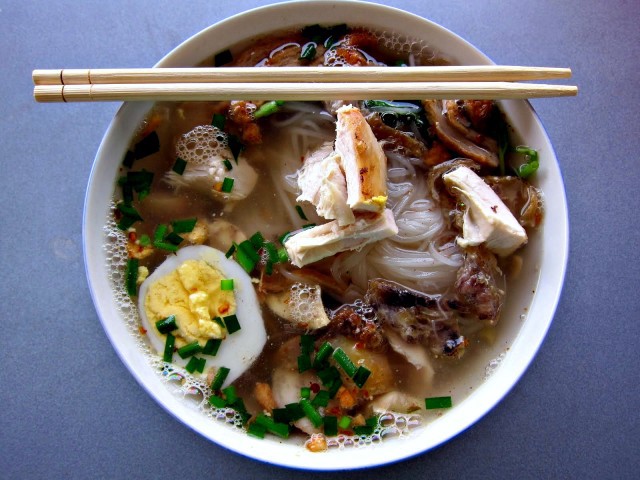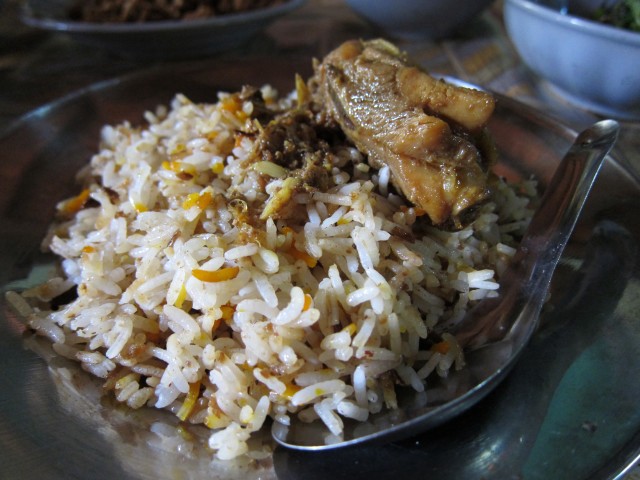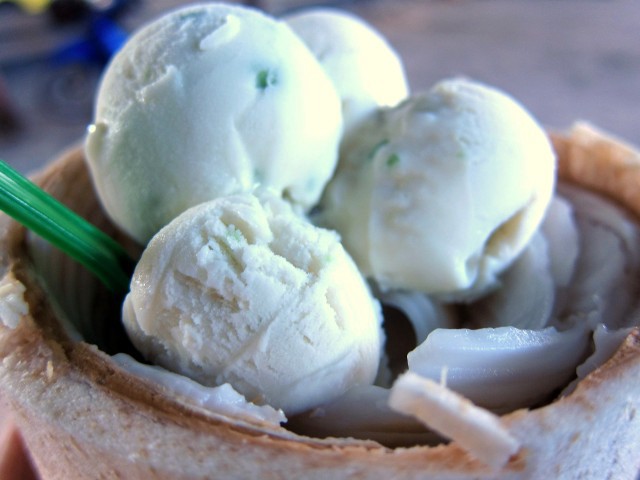Eating Good Cheap Food
by Jodi Ettenberg

When I quit my job to start traveling in 2008, I barely thought about food. My pre-trip mealtime preparation consisted of reading a book called How to Shit Around the World, and that was about it. Back then, travel for me was all about crazy transportation misadventures, fun hikes, and the other travelers I’d meet. But after tasting a meat dish on a Trans-Mongolian train into China, all the bland boiled mutton I’d been eating went out the window, not literally. Food in China was nothing like the stuff I’d had at home in Canada or New York — as I came to learn, every province had its own tastes, techniques, and ingredients. Late to the game, perhaps, but I was bowled over, and eating subsequently became the main reason I travel. And I don’t mean at fancy restaurants — I mean the tiny plastic tables and chairs at the side of the road. I’ve found, too, that talking about food can bridge cultures, allowing me to slide sideways into kitchens and bakeries, butcher shops and market stalls.
But there were two problems: how to eat cheap food without getting sick (and I got sick many, many times — from lukewarm llama empanadas in South America to contaminated soup in Myanmar), and how to eat on the road despite having celiac disease. Over the years, though, I gathered some tips for eating safely, and that’s essentially how The Food Traveler’s Handbook was born. My goal was to demystify street eats for skeptics, while also providing advice for using food as a way to learn and connect. Edith asked me to share a few of my tips (and some of my food photos … mmm … soup), so here they are, and of course I’d be happy to answer any questions in the comments.

– Everyone tells you to eat at the stalls with the longest line of locals, but an important addition to that is to opt for the stalls with women and children in line, too. More variety in the customer base usually means the stall has been vetted enough that it’s safe for everyone. Yes, it’s still better to choose a long lineup of men over crickets and an empty stall, but given the choice, women and children in line is where you want to go.
– For a cheap lunch, go to the local university and find a place nearby. Students are a hungry bunch without much to spend on food, and throughout the world cheap stalls pop up around universities. It won’t be the best meal of your life, but it will be local, fast, cheap, and usually delicious. Not recommended for dinnertime, however, as the meals will have sat out for the afternoon.
– When choosing a stall, try to make sure the woman or man running it doesn’t touch both the money and the food with their bare hands. Either pick a two-person stall where someone’s handling the cash and someone else the food, or a place where the chef is wearing plastic gloves while making the food, and touching the money without them.
– It’s not exactly glamorous, but for celiac disease or other allergies, I’ve carried translation cards with me to indicate what I can and can’t eat in the local language. Friends with peanut allergies do the same on their travels through Asia, and of course due diligence is needed to know what ingredients have to be avoided. (In my case, soy sauce, which contains wheat flour.) Two options for printable cards are Select Wisely or Allergy Translation. They go a long way toward getting your point across — certainly more so than my initial “gesture feverishly while mimicking getting ill over food” — and Select Wisely has a strongly worded option for those with more life-threatening allergies. You could also bring a Point It Dictionary if you’re concerned about eating food you can’t place. Also fun for trading words in your respective language when on a long train ride.
– And in the event you do get sick, it’s convenient to have a first-aid kit with you that includes (1) oral rehydration salts, (2) Ciprofloxacin or a Z-Pack (if you get food poisoning/stomach infections, you’ll want some of this; prescribed by your doctor and replaceable in most pharmacies around the world), (3) Metronidazol, for giardia or amoebic dysentery; I’ve picked these up for reasonable prices in Thailand or other parts of Southeast Asia, and (4) Immodium but only if absolutely necessary — I use it if I’m about to board a bus for 8 hours and know that I’m not going to make it without taking copious bathroom breaks. Best, always, to see a local doctor if you’ve been sick for several days, but I always advocate taking a small medicine kit with you in the event you’re somewhere rural.
– Finally, cutlery is often the culprit for bacteria while the food is safe and fresh. I carry baby wipes to use on chopsticks or utensils that look suspect. Not often an issue, but good to have on you, especially when you head to pee and realize there’s no toilet paper.

Bon appétit!
Jodi Ettenberg is a former lawyer now eating her way around the world and documenting it on her site, Legal Nomads. She gets the shakes when she goes too long without eating sticky rice.